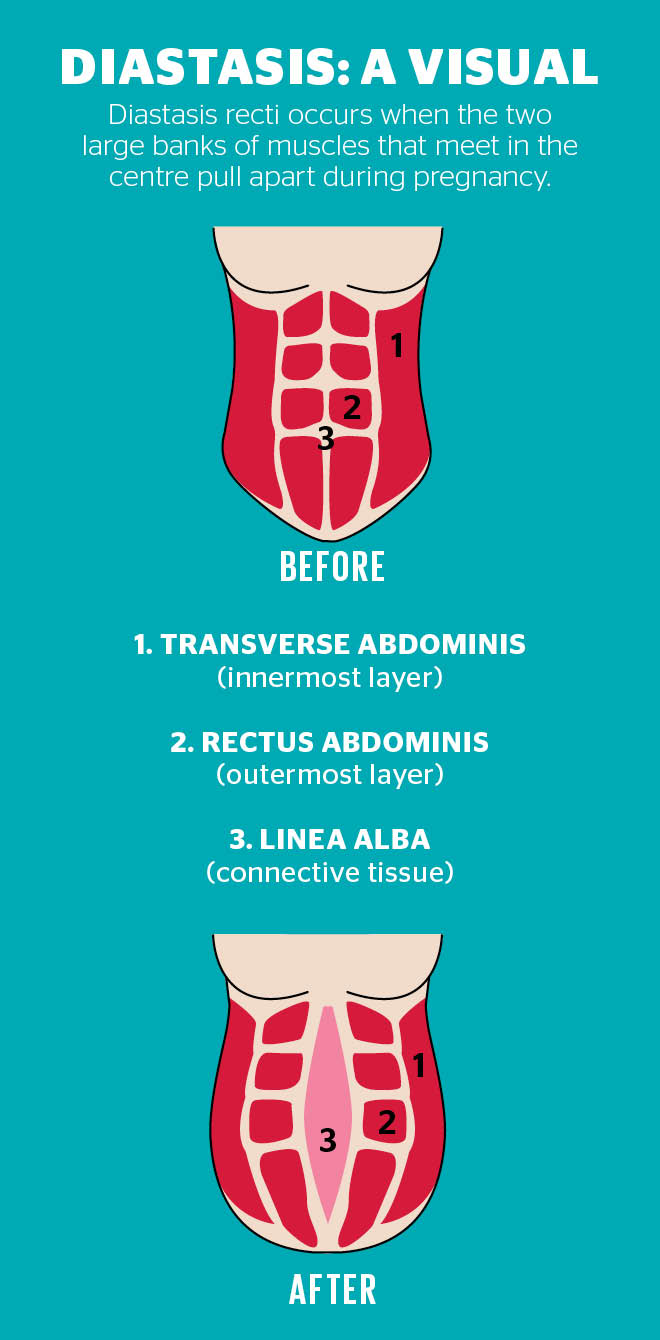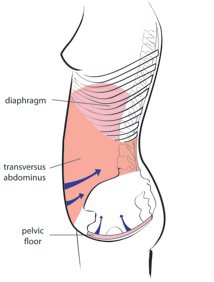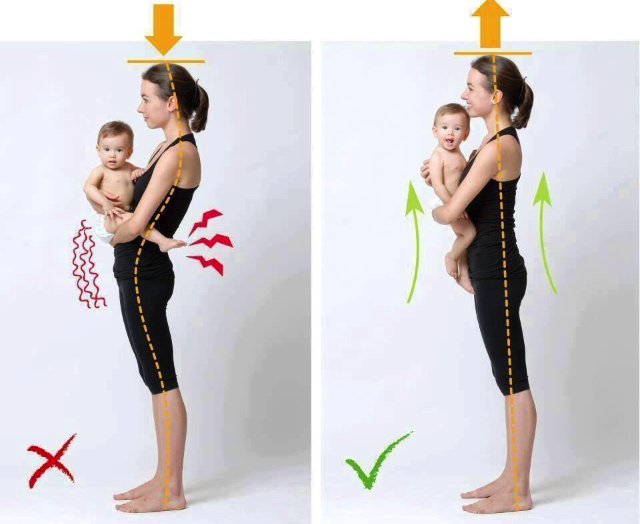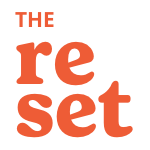
“Are my abs separated?”
It sounds a little scary. It can definitely feel a bit unnerving if you think it’s happened to you.
Don’t worry, mama.
It’s totally normal.
Diastasis Rectus Abdominis (AKA: Diastasis Recti, Diastasis, Abdominal Separation or — my least favourite of all time — “Mummy Tummy”) is the thinning and spreading of the connective tissue in the middle of the Rectus Abdominis muscle. That’s the “six-pack” muscle, BTW.
As your pregnancy progresses and you get to the BEHEMOTH stage sometime around your third trimester, baby’s pressure outwardly on your abdominal muscles forces them to give way a bit. They move away from their intended attachment point, the connective tissue in the middle known as the “linea alba.”
This diagram from Today’s Parent does a great job:

DRA is actually a totally normal and expected part of the pregnancy process. It’s one of the ways your body changes in pregnancy to accommodate your growing baby.
Most women will see the gradual tightening of the linea alba tissues and the closure of the separation over the long-term postpartum period. It will take longer without the support of a Pelvic Health Physiotherapist and, ideally, a qualified Postpartum Fitness Expert who can help you to determine which movements are safe for you or more likely to contribute to the separation.

How Do I Know?
There are a few telltale signs you might be maintaining a DRA past the immediate postpartum period. It would be absolutely normal to expect the separation to take several weeks, even 2-3 months or more, to gradually move together after baby is born.
If you’re past 10-12 weeks postpartum and still experiencing any of the following:
- an obvious “doming” of the abdomen when you sit up, or reverse sit up (recline), when you come onto your hands and knees or change positions suddenly
- persistent low back pain
- a protruding belly out of proportion with the rest of your abdomen
- pelvic floor symptoms (more on that below)
…you may have an abdominal separation that requires some help to heal!
Don’t Panic
First, get thee to a Pelvic Health Physiotherapist for a one-on-one treatment plan. Physiotherapy is a standard part of postpartum care in some countries but not yet in Canada, although people like us can make more noise about it and tell our politicians we want better post-birth care! Physiotherapy is covered by most insurance plans and you shouldn’t need a doctor’s referral. Your PT will asses your pelvic floor and abdomen as she would assess any other muscles: by palpating with her fingers, & checking the strength & length of the tissues.
Wondering how long it will take to get back to your favourite exercises? Check out this interview with a Pelvic Health Physiotherapist!
Nourish Yourself
Proper nutrition is key to healing all sorts of tissue injuries, including the over-separation of the linea alba in pregnancy & postpartum. We know that humans heal best when we are properly hydrated, eating plenty of plant foods, getting adequate protein and healthy fats, avoiding inflammatory foods like alcohol, sugar, and excessive caffeine, and getting adequate rest. (OK, that last one can be tough for mamas, but stress-reducing activities like walking, hot baths and meditating can also help reduce stress when you’re not getting adequate sleep.)
You can get tons of healthy family-friendly recipes and meal planning advice here!
Core, Meet Floor

Most abdominal separation comes hand-in-hand with pelvic floor dysfunction, even if you don’t notice any major symptoms or don’t “pee yourself” regularly. Best to have it assessed and be sure you’re treating the whole pelvic and core system, with the best knowledge & tools you can!
Even if you don’t think you have pelvic floor symptoms, the activation of your deep core muscles, which will help to restore closure and/or tension to your abs, includes the function of your pelvic floor.
No core muscle works in isolation. For a strong core, you must activate your transverses abdominis (TVA) and your pelvic floor muscles together.
Let’s talk about that!
Take A Deep Breath
On your own, begin first by paying attention to your breathing. The core muscles are built to work as a system, centred around the breath. By learning to breathe deeply, with good alignment, we can activate these neglected deep core & pelvic floor muscles to move them through a full range of motion. We get better breathing, better healing, better energy, and better functioning core muscles!
Reduce Pressure
Next, stop creating excessive intra-abdominal pressure which pushes against the separated muscles (and the pelvic floor tissues). Until you’ve got an assessment and/or are under the guidance of a qualified trainer, skip the following:
- Plank / face down positions including pushups and, sometimes, hands/knees
- High-impact exercises and running
- Weighted twisting exercises
- Boat pose, pilates “hundreds” and other targeted abdominal exercises
- Situps, crunches and other motions — even during your everyday life, such as when you get out of or into bed — which compress the abdominal area
What can you do? TONS! Most mamas can do typical strength training workouts, especially with the guidance of a qualified instructor who can help you to align yourself optimally, breathe to relieve abdominal pressure, and help you progress safely.

During your everyday life, start paying attention to the following mama tendencies, all of which might contribute to the slow healing of your abdominal separation.
Try not to:
- Hold your breath when you lift something heavy or pick up your little one; instead begin to exhale (see breathing post above) to relieve abdominal pressure just before/as you begin to pick up your toddler or lift the grocery bags from the trunk. Think: “Blow before you go!”
- Tuck your bum under. Instead, soften your knees while standing so they have a micro bend in them, and centre your weight over the arch of your foot. While seated, use a pillow under your tailbone to help you learn to un-tuck it and feel your sitting bones under you. These are the best positions to practice your diaphragmatic breathing and will also help restore better posture in general.
- Lift anything which forces you to hold your breath or “bear down,” until you are completely healed & symptom free. Keep all weight-lifting and exercise challenging but not so challenging you can’t do a proper inhale and exhale on each rep.
We Know, We Know
It’s a lot of information. The truth is, a holistic approach to restoring your core in postpartum is the best way to ensure you feel strong and confident for years to come.
Quick fix belly wraps and hours and hours of “kegels” just don’t work. We know that now.
And feel free to reach out to us on social media @bellybootcamp or book a free consultation to discuss affordable online training or in-home personal training.
Our award-winning BB classes are also designed to be safe for mamas with DRA and pelvic floor symptoms. Join us and start safely & effectively working toward your postpartum fitness goals!
